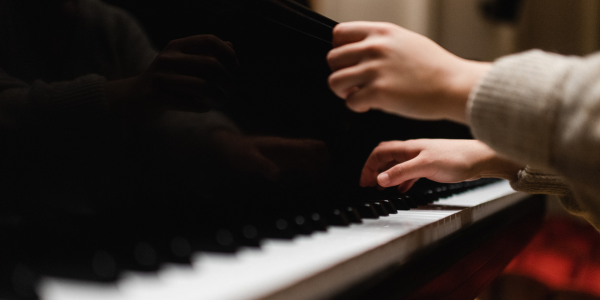We would like to thank Paulina Zamora for this insightful article on her experiences growing up as a musician in Chile. Want to learn more about international teaching practices and repertoire? Register for our 2024 Summer Intensive Seminar “An International Exploration of Piano Teaching Literature” lead by Leah Claiborne and Luis Sanchez. Early bird registration pricing has been extended until May 15, 2024! Learn more and register here.

The international column has frequently focused on comparing music education systems in different parts of the world, with previous articles discussing subjects such as the Australian Music Examinations Board, as well as thoughts from professors of Asian conservatories about sending students abroad to Europe. In continuing this trend, I sought out my former classmate Paulina Zamora, whose journey as student and professor in North and South America presents a unique perspective on the music training in both regions that has proven to be wonderfully illuminating. -Jerry Wong, International Column Editor
My trajectory as a concert pianist, teacher, and scholar followed a similar international pathway as many musicians whose native origins are far from the traditionally accepted educational music centers of the world. I excelled in my native Chilean environment until completion of my undergraduate degree and went on to graduate studies abroad. After twenty years of artistic and professional career growth, I returned to Chile and began to forge a teaching career in academia, while steadily building international opportunities for performances and masterclasses.
My beginnings were similar to that of a child prodigy, but I prefer to think that I was a very talented girl with lots of potential and a serious, no-nonsense attitude. From the age of five I intuitively knew I would dedicate my life to music. As the youngest of three sisters, my father’s immediate attention went to fostering a musical upbringing in my oldest sister. I can recall interrupting my sister’s piano lessons and begging my father to teach me as well. After many bold attempts for attention, my father conceded. It is so meaningful to me that as adults, my oldest sister became a beautiful ballet dancer and I am now a professional pianist. We often rejoice in the commonalities between these two art forms.
The Music Department at the University of Chile offers an eight-year pre-collegiate program which is referred to as the Basic Period (conservatory level) and a five-year Undergraduate degree. I undertook studies at both levels, receiving the standard two piano lessons per week during both courses of study. During the Basic Period, piano lessons were complemented with fundamental courses such as Theory, Harmony, and Introduction to Music History. While pursuing my undergraduate, I received the traditional curriculum of a bachelor’s degree in the United States. Furthermore, during my early conservatory years, I would spend summers receiving daily piano lessons. An outcome of this intense training was to play my first formal recital at age nine, performing from memory the fifteen two-voice Inventions by Bach. This was followed, a year later, by the Fifteen Sinfonias. At that time, I did not feel comfortable questioning my teachers or proposing different options and, of course, this exercise gave me invaluable lessons in self-discipline and focus. Years later I would return to these works in recording and editing projects. Having said all of that, I do refrain from reassigning this task to young students of my own!
Pursuing graduate studies in the Unites States presented all sorts of enlightenment and change. The most obvious difference was the adjustment from two or more hours per week of lessons to just to one hour per week, and sometimes less if the artist-teacher was away. The reasoning behind this amount of instruction made sense to me, but it took me a few months to adjust. Ultimately, acquiring self-reliance and independent musical thinking was a valuable lesson from those years.
During my studies at the Eastman School of Music and Indiana University, I had moments to reflect on the wonderful teaching I had received in Chile, while also embracing the opportunity to understand more fully what still needed to be learned. I was mesmerized by the infrastructure of the schools: the buildings themselves, the magnificent libraries, the many practice rooms with decent pianos, stunning concert halls, and the rich musical life of each respective city. The academic level of both schools was outstanding, and I felt this from my first days of attending music-related classes.
We hope you enjoyed reading this excerpt from Paulina Zamora’s article, “A Continuum Between Teaching Styles: Reflections from the US and Chile.” Read the full article by clicking here.
MORE ON LATIN AMERICAN MUSICIANS AND COMPOSERS
- VIDEO: Ponce: Intermezzo No. 1 by Ricardo de la Torre
- MAGAZINE ARTICLE: Brazilian Dance Music For Intermediate and Early Advanced Students by Ana Paula Machado Simoes
- VIDEO: Ginastera: 12 American Preludes, Op.12 by Alejandro Cremaschi
- MAGAZINE ARTICLE: 2021 Collegiate Writing Contest Winner: Uncovering Teresa Carreño: Virtuoso, Composer, and Pioneer by Grace Thompson
- MAGAZINE ARTICLE: Gabriela Montero: From Advocacy to Artistry by Luis Sanchez